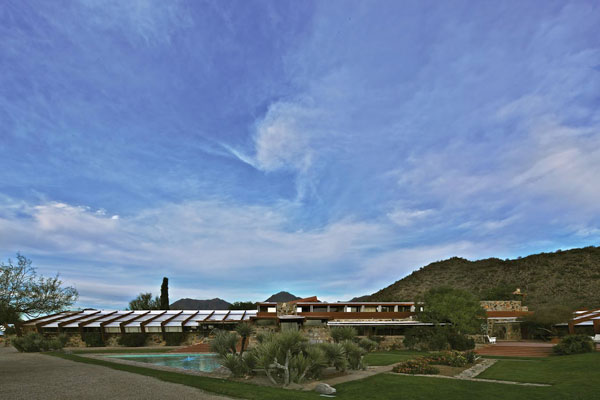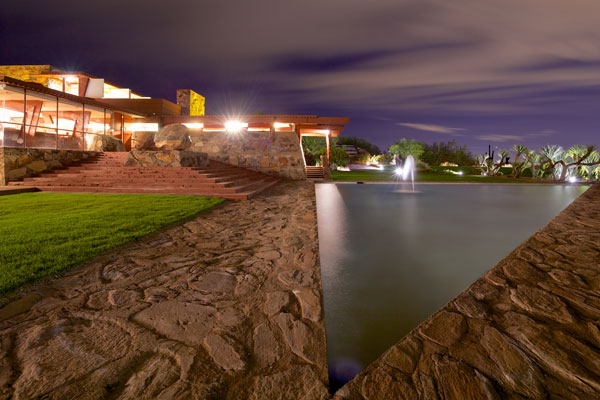Frank Lloyd Wright: American Icon, Architectural Master, Modern Dreamer
Discovering Taliesin West
Two properties designed by Wright bear the name Taliesin. The first, his own summer home near Spring Green, Wisconsin, is loosely referred to as simply Taliesin, while his winter home and studio in Scottsdale, Arizona is known as Taliesin West.
For the purpose of this course, we will address Taliesin West in depth, which would not just serve as Wright's winter home, but also his workshop and would later become the Frank Lloyd Wright School of Architecture.

Photo courtesy of Andrew Pielage for Frank Lloyd Wright Foundation, OBMA, © Wright Fdn.
View of guest deck and Taliesin West from prow

Photo courtesy of Andrew Pielage for Frank Lloyd Wright Foundation, OBMA, © Wright Fdn.
Taliesen West Panorama
Taliesin West was built primarily with desert rocks taken from the local landscape along with concrete and steel. Wright approached the design of Taliesin West like he did everything else, with an interest in harmony and unity for the surrounding environment. In some areas, particularly his work room, he chose translucent canvas as a roofing material in order to optimize natural light inside the building.
Wright also put his stamp on the grounds and landscaping in order to complete the vision of Taliesin West that he held in his mind. Complementing the desert-like terrain of the surrounding area, he worked with a limited palette and jagged or chunky shapes. That jagged aesthetic is mimicked in the architectural structure and silhouette. Jutting wood beams and steel frames both create and yet interrupt the low, horizontal lines Wright is famous for. The pool is unusually triangular in shape, further serving to imitate the jaggedness of the landscape.
On the interior, the lines are dominated by horizontals and verticals showcasing Wright's love of geometry. Steel beams, painted his often-used favorite shade of red, are precise contrast to walls and surfaces made of the same rock and cement used on the exterior.









